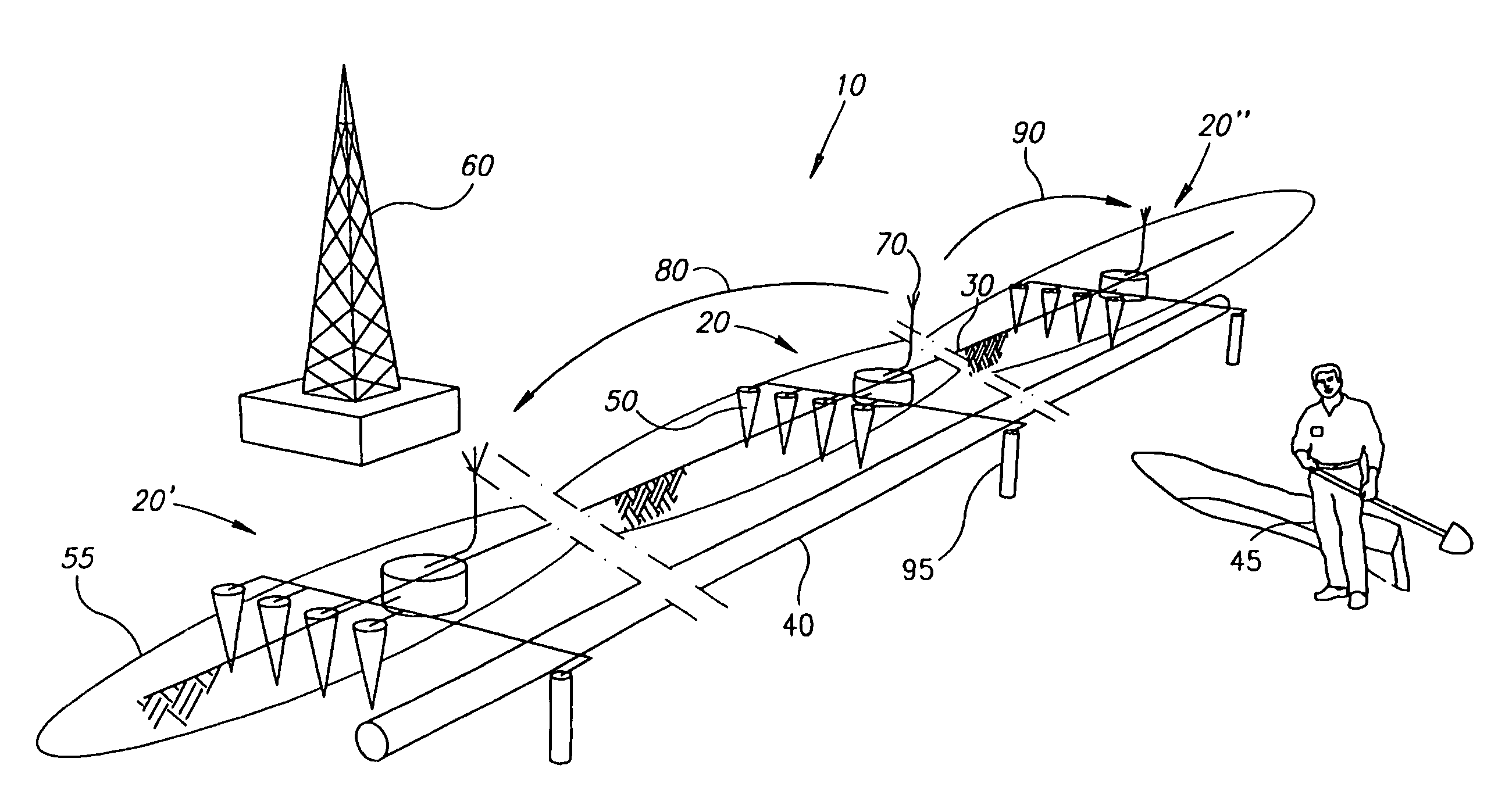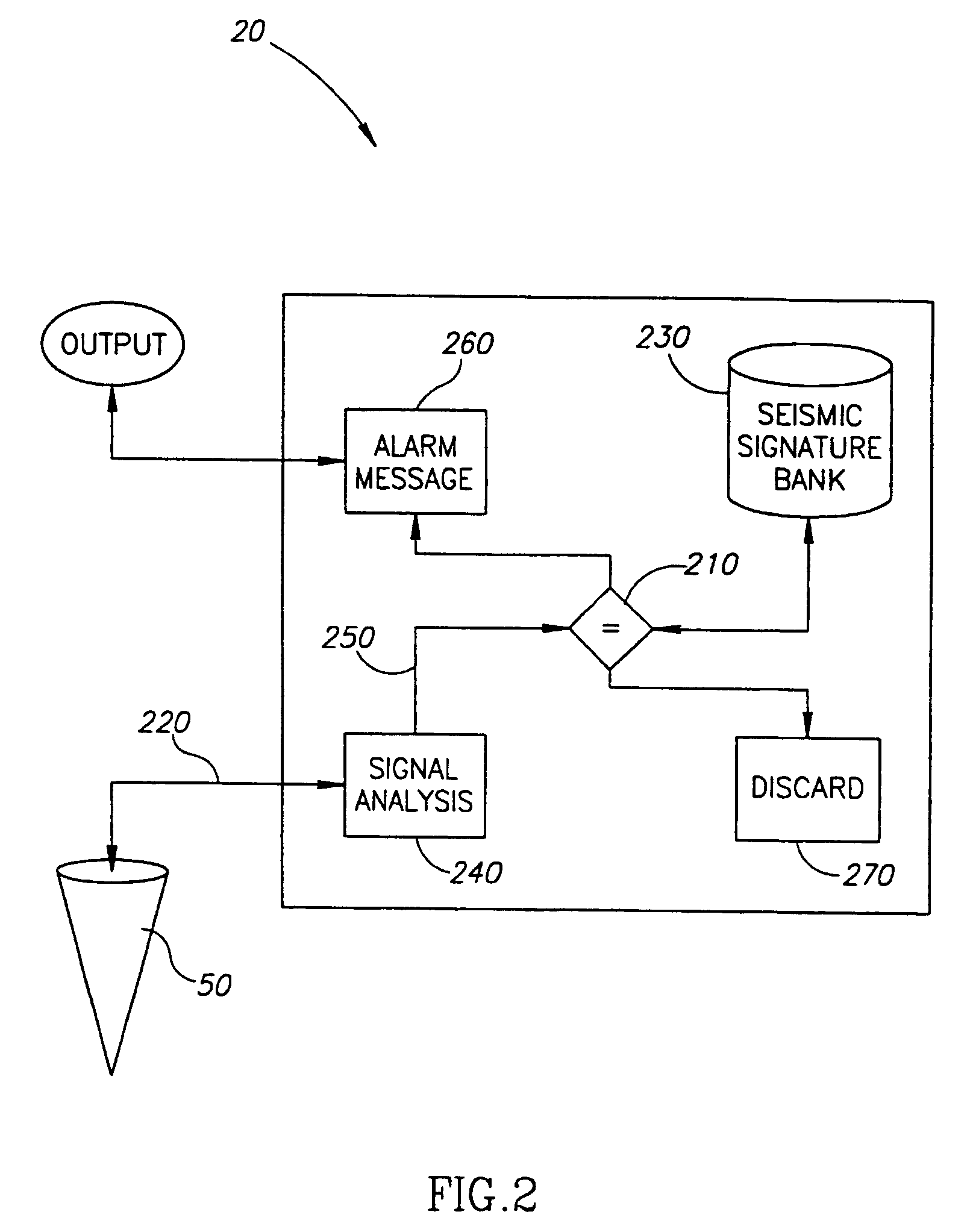Many linear installations, be it buried ones (for example, piping systems) or above the ground ones (for example, railway tracks, fences along borders), constitute potential targets for sabotage or breaking in through them.
An act of terror or vandalism damaging the line, or intrusion into the
pipe line installations (e.g., one of the control stations), can cause huge and uncontrollable damage.
In the
fuel line example presented above, sabotage damaging the line might result in
cut off of fuel sources at many locations, supply shortages, and even explosions accompanied by injuries or even death of humans as well as sever ecological damage to the environment.
At present, there exists no warning or alarm system suitable for protecting linear installations.
However, when patrolling very long lines, it is definitely impossible to cover the total length of the line at a satisfactory frequency, and this fact increases the motivation of terrorists or other intruders to conduct their malicious operations, as they know that the probability of being detected and apprehended is very low.
Even the deployment of electro optical sensors, for example, video cameras, along the length of the line does not provide an adequate solution.
Those detectors are expensive, exposed to the environment, burglary and vandalism, and require constant maintenance.
Their performance deteriorates under certain detrimental environmental effects such as bad or lowered
visibility level (night-time, mist or
fog), and they cover very limited sectors and not the entire line.
The system does not identify small scale local illegal pumping or stealing of fuel, nor does it provide exact information regarding the location of the problem area.
They do not provide earlier warning messages indicating the would be intrusion or atrocious deed.
These sensors, however, are similar in results to those of the manned patrol that passes occasionally along the length of the pipelines, and its
weakness, as a system is the outcome of its inherent
low frequency operation.
However, a
warning system based on optical fibers has many drawbacks, some of which are presented herein.
For example, a
tractor working in an agricultural plot bordering on the
optical fiber might appear as “an occurrence” of an extremely dominant incident that affects the
optical fiber at a specific point and “blinds” the system rendering it incapable of detecting additional, simultaneous incidents in other (far away) locations along the line, that might be several orders of magnitude more dangerous than those that were detected.
An additional drawback stems from the susceptibility of the
optical fiber to cuts or impacts.
For example, within a sector of say 30 km long, damaging actions might take place unnoticed, “sponsored” by the break in the
fiber's continuity.
A different, additional drawback stems from the fact that the optical
fiber—due to its own long continuing construction—might be easily uncovered and exposed.
An additional drawback of the cited optical fibers system—serving as means for providing warnings triggered by a person approaching the linear installation, such as for example a buried
pipe in the ground from a long time past, is the difficulty to
upgrade the linear line in order to deploy the
fiber along its length.
Yet another additional drawback associated with a system that is based on indications resulting from exposing the optical fiber to local movements and / or bending is the inability to identify the exact type of the interference.
Finally, at times it is just impossible to obtain the required continuity when deploying the fibers' line, as for example when the pipe line traverses a river or passes over a bridge—where it is exposed to the
naked eye, or crossing through a difficult to access wadi or over a boulder /
cliff.
It is not sufficient just to detect an interference or
noise for providing an effective warning regarding the occurrence of a
physical access effort or penetrating action onto or through the linear installation.
Relying on sensing of seismic / acoustic interference and / or noise as an indication to the occurrence of
physical access effort and / or penetration action and to the location of this incident, is not an effective one as long as no capability of identification and
verification were integrated into the system at a high reliability level that they do not constitute false alarms.
Obviously, routine and innocent activities occurring along the installation line and through the
linear system, if they happen to be such that might generate noises or interference, while there is no capability available to identify and verify them and their true nature, might generate
false alarm at an undesirable frequency.
 Login to View More
Login to View More  Login to View More
Login to View More 


